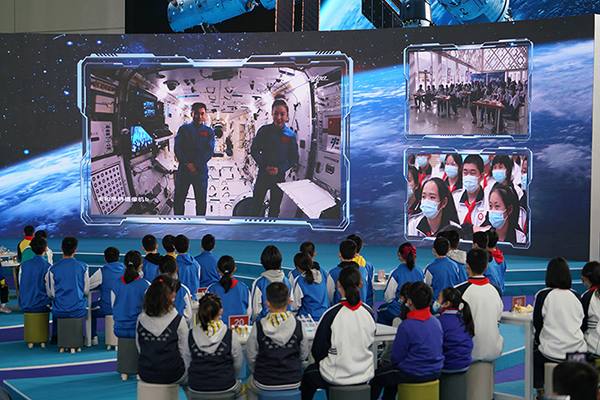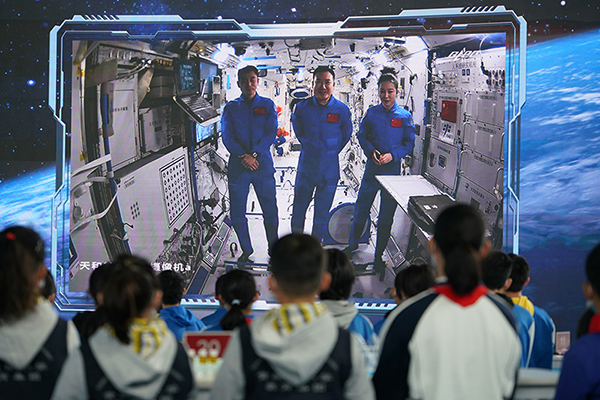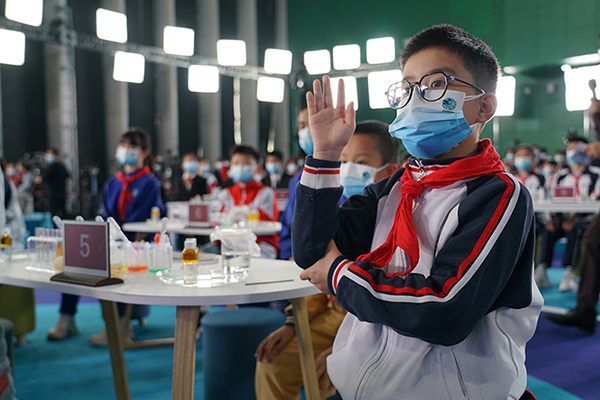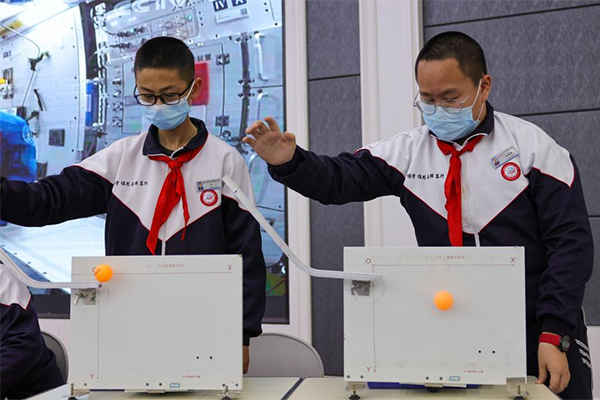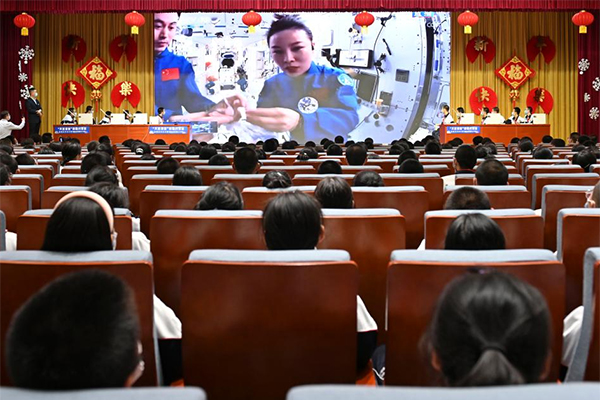BEIJING — The second live class from China's space station was held on the afternoon of March 23, delivered by Shenzhou-13 crew members Zhai Zhigang, Wang Yaping and Ye Guangfu to students on Earth.
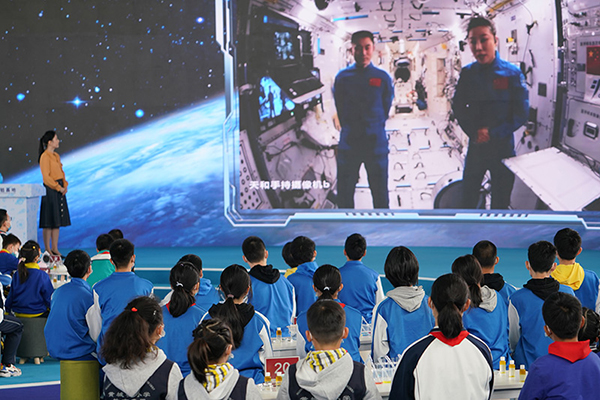
The class began at 3:40 pm (Beijing Time) and was attended by students from three classrooms across China. The main classroom was located in the China Science and Technology Museum, while others were respectively set up in Lhasa in Southwest China's Tibet autonomous region and Urumqi in Northwest China's Xinjiang Uygur autonomous region.
Wang, assisted by the other two crew members, conducted several scientific experiments, such as the crystallization of supersaturated solution, a liquid bridge demonstration, water-oil separation and throwing objects under the zero-gravity condition, amazing numerous students on Earth.
The 45-minute lecture also featured an introduction to the space science facilities and a real-time Q&A session with the students via video call, according to the China Manned Space Agency.
In the first experiment of the class, Wang used a bag of supersaturated sodium acetate solution to demonstrate its crystallization in microgravity.
After Wang squeezed the solution from the bag, it became a transparent fluid ball floating in front of the camera. Wang used a small stick covered with crystal nuclei to touch the fluid ball and it quickly became crystallized.
"It looks like an ice ball, but as I touch it, I can feel that it's warm," Wang told the class.
The space teacher explained that the solubility of sodium acetate in water of higher relative temperature is very high, and it very easily forms a supersaturated solution. Just a small trace of crystal nuclei causes the sodium acetate to crystallize, releasing a lot of heat.
Another microgravity experiment showed how to separate oil from water in space. Wang prepared a small bottle of oil and water, which were separated at the beginning, while the students on the ground also had such bottles, allowing them to follow the procedure.
The teacher and students all shook bottles to mix oil and water into a fluid mixture. The students found their mixture gradually separated into oil and water again, but the fluid in space remained as a mixture.
When Wang asked for a method of separating water and oil in space, a student from Beijing suggested swinging the bottle in a circle. Wang's teammate Ye Guangfu tried the method and succeeded in separating the two.
Wang said that centrifugation, the simple principle behind the experiment, can play an important role in science experiments. She said that the space station is equipped with a centrifuge, which the crew can use to separate and prepare medical samples such as blood and urine.
The three astronauts went into space onboard the Shenzhou-13 spaceship and entered the country's space station on Oct 16, embarking on the country's longest-ever crewed mission for space station construction.
On Dec 9, 2021, the trio delivered the first live lecture from China's space station, showing the students their living and working areas at the Tianhe core module and several scientific experiments under the zero-gravity condition.
